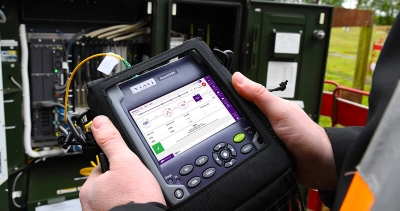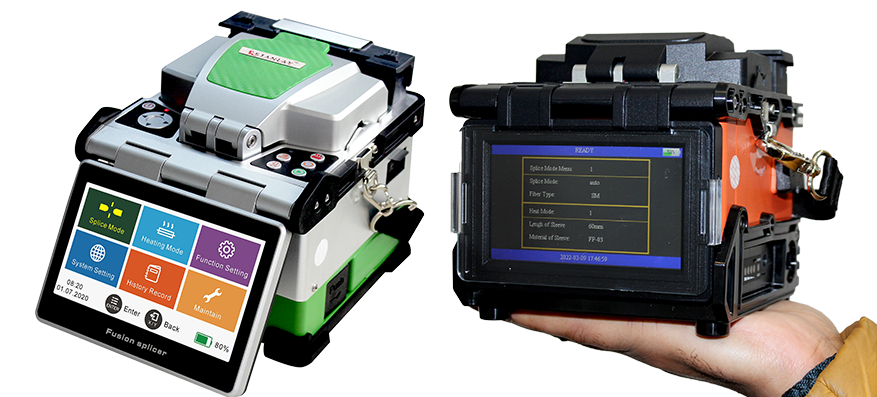Everything you need to know about robotic vision in automation
Wiki Article
Exploring the Influence of Robotic Vision on Modern Production Techniques and Quality Control
Robotic vision technology is transforming the landscape of modern manufacturing and high quality control. By integrating innovative imaging systems and expert system, producers can achieve extraordinary levels of accuracy and performance. This change not only enhances manufacturing processes but additionally addresses important challenges in keeping product requirements. As industries significantly depend on these innovations, the ramifications for future manufacturing techniques stay to be fully explored. What will this indicate for the affordable characteristics of the market?Comprehending Robotic Vision Innovation
Robotic vision innovation offers as the backbone of automation in modern production. It includes making use of video cameras, sensors, and synthetic knowledge to make it possible for robotics to translate and reply to aesthetic details from their atmosphere. This technology allows robots to determine, find, and evaluate items, making them capable of doing intricate jobs such as assembly, assessment, and product handling with accuracy. The integration of artificial intelligence formulas additionally enhances the capacity of robot vision systems, enabling them to adjust to differing problems and improve with time. By refining pictures and information in real-time, robot vision systems can help with quicker decision-making and decrease errors in manufacturing procedures (optical measurement system). This modern technology not only enhances operational performance however also guarantees that top quality criteria are met consistently. As the manufacturing landscape proceeds to progress, recognizing the complexities of robot vision modern technology becomes essential for leveraging its prospective totallyAdvantages of Robotic Vision in Production
Robotic vision technology uses substantial benefits in manufacturing by improving accuracy and precision in tasks such as quality assurance and setting up. This increased degree of information warranties that products meet rigorous standards, lowering waste and remodel. Furthermore, the combination of robot vision can result in raised production effectiveness, permitting producers to enhance their procedures and attain higher result rates.Enhanced Precision and Accuracy
In modern manufacturing, improved precision and accuracy are vital for maximizing production processes and guaranteeing item top quality. Robotic vision systems enable machines to perform intricate jobs with remarkable uniformity. These systems use sophisticated imaging technologies to spot minute details and variations in products, parts, and finished items. By examining visual information in real-time, robotic vision significantly minimizes human error, causing fewer flaws and better standards. In addition, boosted accuracy in measurements and placing facilitates much better alignment in setting up processes, which is essential for complex layouts. Eventually, the assimilation of robot vision not only bolsters the integrity of making outputs yet likewise promotes self-confidence among customers regarding item honesty and performance. This accuracy is crucial in sectors where top quality is critical.Boosted Manufacturing Performance

Suppliers are progressively turning to vision systems to improve production effectiveness across various processes. These sophisticated systems make it possible for real-time inspection and tracking, substantially minimizing downtime created by errors or problems. By incorporating robotic vision, firms can automate quality control, permitting faster recognition of issues and decreasing the requirement for human treatment. This leads to streamlined workflows, as robotics can promptly adapt to changes in production demands without giving up precision. Vision systems facilitate much better supply management by accurately tracking components and items, making sure perfect source usage. Inevitably, the adoption of robotic vision not just enhances performance yet also adds to higher result rates, decreased operational prices, and improved total efficiency in the manufacturing industry.
Enhancing High Quality Control Processes
Robotic vision modern technology substantially enhances high quality control processes in production by employing precision inspection strategies. These innovative systems assist in real-time issue discovery, ensuring that products meet strict quality standards. Because of this, makers can reduce waste and improve general performance.Accuracy Inspection Techniques
Precision examination methods have actually revolutionized quality assurance procedures in manufacturing, allowing the discovery of min defects that traditional methods could forget. These techniques leverage advanced imaging technologies, such as high-resolution electronic cameras and laser scanning, to accomplish unequaled accuracy. By utilizing robotic vision systems, makers can automate inspection jobs, making certain consistent performance and decreasing human error. The assimilation of artificial intelligence formulas furthermore boosts these systems, permitting them to adapt and boost over time. In addition, precision evaluation helps with the identification of refined variants in item dimensions and surface area coatings, which can greatly affect general product high quality. Consequently, producers can implement rehabilitative activities a lot more promptly, why not try these out eventually bring about reduced waste and enhanced customer fulfillment.Real-Time Defect Detection
Utilizing sophisticated imaging technologies, real-time flaw discovery transforms top quality control procedures in production. By incorporating high-resolution cams and advanced algorithms, suppliers can swiftly identify abnormalities during production. This modern technology helps with immediate rehabilitative actions, reducing waste and boosting overall effectiveness. Real-time systems analyze products as they relocate along the production line, ensuring that flaws are identified and attended to immediately manufacturing schedules. On top of that, the implementation of artificial intelligence boosts the accuracy of these systems, permitting them to adjust to new defect patterns in time. Consequently, makers benefit from boosted product high quality and lowered functional expenses. Eventually, real-time issue discovery not just improves processes yet likewise promotes a society of constant enhancement in contemporary manufacturing atmospheres.Real-Time Information Evaluation and Choice Making
In the dynamic landscape of production, real-time information evaluation encourages systems to make swift, educated decisions. By leveraging sophisticated robotic vision modern technologies, manufacturers can collect and process large quantities of information instantaneously. These systems examine visual inputs to check production procedures, making certain that any kind of discrepancies from quality standards are found and dealt with without delay. As a result, manufacturers can maximize operations by reapportioning resources and adjusting operations based upon real-time understandings.Moreover, the integration of information analytics permits for anticipating maintenance, where possible tools failures are anticipated prior to they interfere with production. This proactive strategy minimizes downtime and boosts general efficiency. robotic vision. The ability to make data-driven decisions in genuine time substantially minimizes waste and boosts product top quality, allowing manufacturers to react to market needs quickly. As an outcome, real-time information evaluation not just streamlines production but additionally promotes a society of continuous enhancement in contemporary manufacturing environments
Obstacles in Carrying Out Robotic Vision Equipments
Carrying out robotic vision systems in producing offers a series of challenges that can hinder their effectiveness. One considerable obstacle is the intricacy of incorporating these systems with existing equipment and operations. Suppliers frequently encounter compatibility problems with tradition devices, bring about raised expenses and downtime. Furthermore, the variability in item shapes, dimensions, and materials can make complex the calibration of vision systems, requiring substantial training and fine-tuning.Another challenge depends on refining huge quantities of visual data in actual time. High-performance computing resources are important, which may require more financial investment in framework. Moreover, there find out this here is a lack of experienced employees efficient in handling and keeping these sophisticated systems, bring about potential functional ineffectiveness. Making sure the reliability and precision of robot vision systems under varying ecological conditions positions a constant challenge. Dealing with these concerns is crucial for making best use of the potential benefits of robot vision in manufacturing.
Future Patterns in Robotic Vision for Production
As advancements in fabricated knowledge and machine learning continue to progress, the future of robot vision in production shows up progressively appealing. Emerging patterns show a shift in the direction of extra sophisticated imaging modern technologies, such as 3D vision systems and hyperspectral imaging, which will enhance precision in top quality control processes. Combination with the Net of Things (IoT) will certainly allow real-time data evaluation, permitting robot systems to adjust swiftly to changes in the manufacturing setting. In addition, the advancement of collaborative robots (cobots) equipped with advanced vision capacities is anticipated to help with seamless human-robot interactions, enhancing effectiveness and safety and security on the . Additionally, the consolidation of side computer will encourage robotic vision systems to process information in your area, lowering latency and making it possible for faster decision-making. These technologies will certainly not just improve making procedures however additional resources additionally substantially enhance product high quality, placing robot vision as a cornerstone of future industrial operations.Frequently Asked Inquiries
Just How Much Does Robotic Vision Modern Technology Generally Cost?
Robotic vision innovation normally costs between $10,000 and $100,000, depending upon the complexity and specifications. Factors influencing cost consist of sensing unit top quality, software program capacities, and combination requirements, making it important to evaluate particular project needs.What Industries Are Many Impacted by Robotic Vision Improvements?
Robotic vision developments considerably impact industries such as production, vehicle, electronic devices, and food processing - fibre testing equipment. These sectors take advantage of enhanced automation, boosted quality assurance, and raised effectiveness, resulting in streamlined operations and decreased labor pricesCan Robotic Vision Solutions Be Integrated With Existing Machinery?
Robotic vision systems can certainly be integrated with existing equipment. This integration boosts functional efficiency, permitting makers to take advantage of advanced innovations without the need for total overhauls, therefore enhancing production processes and keeping quality criteria.
What Abilities Are Required to Run Robotic Vision Solutions?
Running robot vision systems requires efficiency in programs, an understanding of artificial intelligence, expertise of photo handling techniques, and the ability to fix software and hardware problems, making sure smooth assimilation and perfect efficiency within making settings.Are There Any Type Of Safety And Security Worry About Robotic Vision in Production?

Report this wiki page